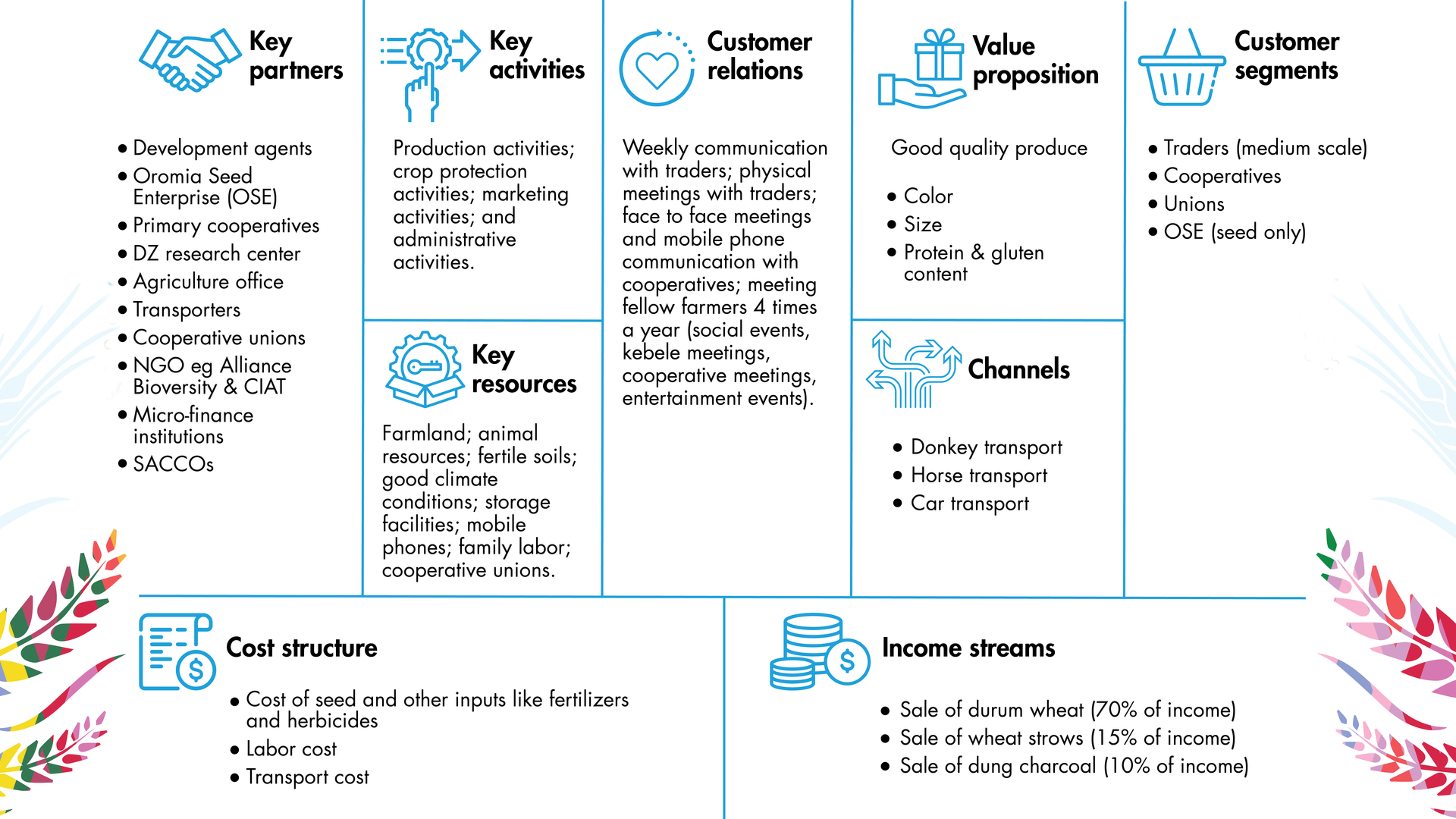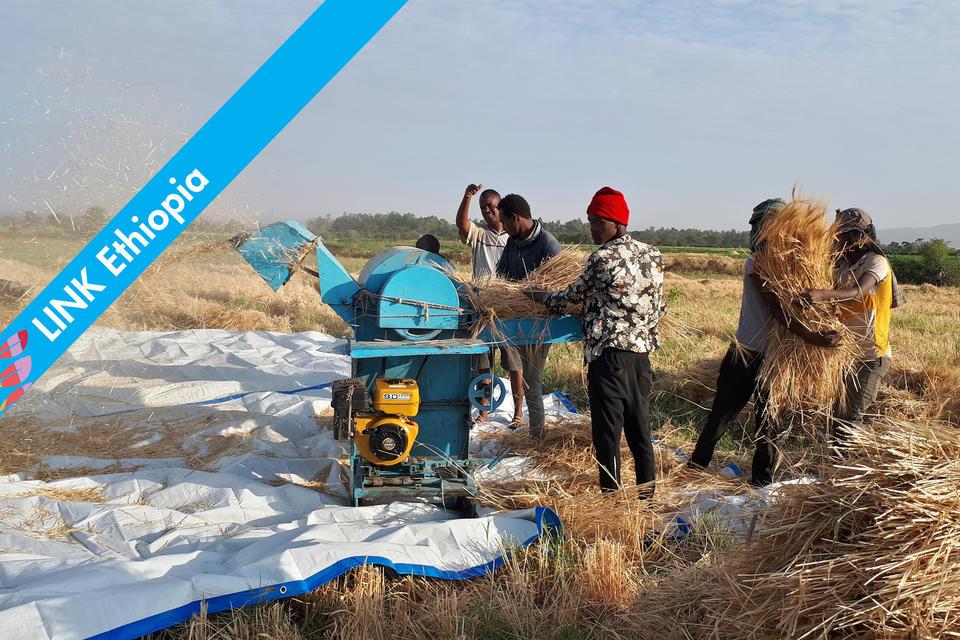Blog Linking farmers and markets in Ethiopia: inclusive business models

How the study on durum wheat in Ethiopia continued to apply the LINK Methodology towards implementing inclusive business models in the country.
Following the success story on one of the most important crops in Ethiopia, let's take a look at the second phase of the study on the durum wheat value chain conducted by our team and funded by the German Agency for International Cooperation (GIZ), in search of inclusion and productivity improvement.
During the second phase, the project sought to take necessary steps to build a sustainable and inclusive business model for durum wheat value chain in the study area that can be scaled in other parts of Ethiopia. To achieve this objective, the second tool of the LINK Methodology was applied, since the Business model canvas and its linkages with Tool 1. Value chain mapping helps to understand where to focus intervention efforts in terms of choosing a business model in which to intervene.

Figure 1. The LINK toolbox. 2023. Design by: Erika Mosquera and Carolina Polo.
Tool 2: Business model canvas
A LINK training workshop was organized in Bishoftu. During the workshop the participants were trained on inclusive business, conduct the business model canvas, and initiate and facilitate engagement between durum wheat producers and the private sector. The three-day workshop required the physical presence of the selected actors (producers, traders and processors) for meaningful and effective interactions and facilitated engagements to build a sustainable business relationship that is mutually beneficial.
The business model canvas tool was used to: facilitate dialogue between durum wheat farmers and processors to establish formal business relationships; highlight bottlenecks and financial imbalances in the commercial relationship; identify areas of innovation or improvement; enhance business thinking at farm level; evaluate how distinct business relationships between small-scale farmers and the processors function; and present complex business relationships in an easy way.

Photo credit: Kevin Onyango
During the workshop participants were facilitated to apply the tool in their business case. Three groups were formed: producers, traders, and processors, each of which was guided on developing their business canvas.
In this way, the three groups were taken through a model canvas made up of different blocks, within which were included: customer segment, value proposition, channels, customer relations, income streams, key resources, key activities, key partners and cost structure. The following figures show a summary of the canvases created by the three groups (producers, traders, and processors) during the workshop.
Business Model Canvas done by farmers

Figure 2. Buyer facing BMC (By farmers). Ethiopia. 2023. Design by: Carolina Polo.
Business Model Canvas done by traders

Figure 3. Producer facing BMC (By traders). Ethiopia. 2023. Design by: Carolina Polo.
Business Model Canvas done by processors

Figure 4. Trader facing BMC (by processors). Ethiopia. 2023. Design by: Carolina Polo.
After knowing a bit more about how the LINK Methodology was applied in the second phase of the study on the durum wheat value chain in Ethiopia and seeing some of the key results obtained, find out what happened with the third and fourth tool of the methodology, along with the conclusions of the study obtained during the final phase of this project in the next blog in this series.
Funded by:



